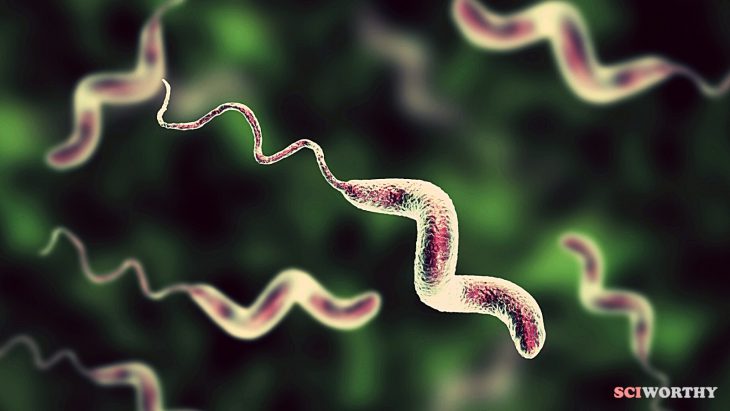Humans want to understand our place in the universe. We wonder when and how the first living cells on Earth came to be. We want to know how those cells evolved through time into complex multicellular organisms like us. These are big questions that scientists cannot fully answer yet. To answer questions about the origin and evolution of life on Earth, scientists study life as we know it today and compare it to ancient rocks and fossils that show what life was like in the distant past.
By studying certain features of fossils, scientists can understand how a fossilized organism lived its life and what it was able to do. Complex organisms like plants and animals rely on self-directed motion, such as walking, swimming, flying. Plants can’t get up and run or fly, but they do turn towards the sun. A recent study of some of Earth’s oldest fossils suggests self-directed motion evolved very early in the history of life.
A microfossil is a fossil of a microorganism, likely ancestors of modern day bacteria or yeast. Scientists studying 3.4 billion-year-old microfossils saw some with structures that looked like tails. There are microorganisms living today with tail-like structures that allow them to direct their own movement as well as structures that help them anchor to solid surfaces or transfer genetic material. Structures that support self-directed movement include flagella, pili, archealla, and cilia. Prostheca are structures that help microorganisms anchor themselves to surfaces or transfer genetic material to other organisms.

Examples of structures that microorganisms use to move themselves around.
For example, Escherichia coli, a bacterium commonly found in the large intestine that can sometimes cause food poisoning, has multiple tail-like flagella that help it swim towards food sources and away from danger. This is a major advantage over microorganisms that cannot direct their own movement, and thus have no control over whether they drift into a source of food or danger.
Before this study, the first known example of a microorganism that was able to direct its own movement was 2.1 billion-years-old. If the tail-like structures the scientists observed in 3.4 billion-year-old microfossils did enable them to direct their movement, then this important feature of complex living things evolved at least 1.2 billion years earlier than previous evidence suggested.
To determine whether the tail-like structures allowed the microorganisms to direct their movement, the authors calculated the organism’s appendage shape index. To calculate this index, they measured currently living, modern microorganisms with tail-like structures and computed the ratio of the width of the tail-like appendages to that of the cells they were attached to. The scientists then made the same measurements and computed the same ratio for the 3.4 billion-year-old microfossils.
They compared the ratios observed in the microfossils to the ratios in the appendage shape index. The microfossil ratios were very close to those of living microorganisms with flagella, archealla, and cilia, which allow for self-directed movement, and much less than those of living microorganisms with anchoring appendages like prostheca. This finding is a strong indication that the fossilized 3.4 billion-year-old microorganisms were able to direct their movement.
This study suggests that microorganisms evolved the ability to direct movement very early in the history of life on Earth. The 3.4 billion-year-old microfossils with tail-like structures are only slightly younger than the oldest known microfossils, which are just over 3.5 billion-years-old. Answering the question of when living things became able to direct their movement adds one more small piece to our understanding of how the first living cells on Earth evolved into complex organisms, including humans.


